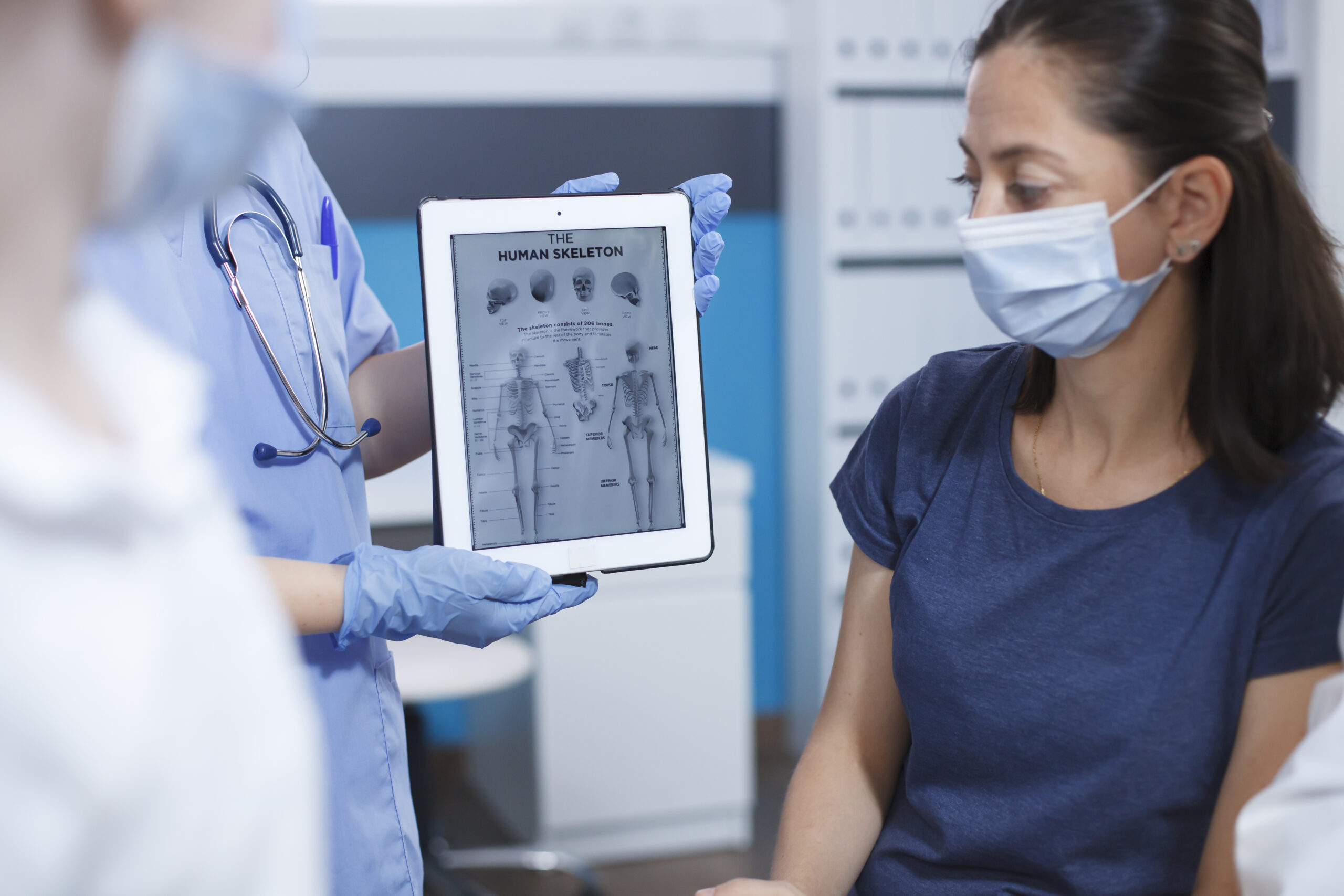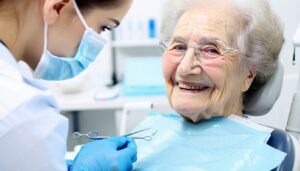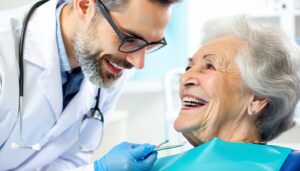If you have been searching for a modern, efficient, and precise approach to dental care, digital xray diagnostics may be the innovative solution you need. At Vivid Dental Raleigh, you can benefit from advanced imaging technology that enhances your comfort and safety, while also ensuring accurate diagnoses. When combined with our commitment to high‑tech, aesthetic‑focused cosmetic and general dentistry, this technology helps you achieve a healthier smile and a more confident life.
Embrace digital x-ray benefits
Digital x-ray technology represents a significant leap forward in diagnostic imaging. Unlike traditional film-based imaging, digital methods capture images electronically, eliminating the need for harsh chemicals and lengthy processing. According to Okun Dentistry, digital x-rays also allow for quick image retrieval, easy sharing between dental professionals, and better overall patient education. For you, this streamlined process translates into a more convenient and informative visit.
Understanding how it works
Traditional x-rays rely on film to record images, which require a chemical process for development. By contrast, digital imaging captures x-rays with specialized sensors that convert them into electronic signals. Those signals are then processed into high-quality images that your dental provider can see almost immediately on a computer screen.
- No chemical processing
- Images stored electronically
- Faster turnaround time
Because these electronic images are instantly viewable, your dentist can walk you through your x-rays right in the exam room. You can see exactly where potential problems lie, gaining a better grasp of your oral health status.
Key differences at a glance
Below is a quick comparison that highlights the differences between traditional film x-rays and digital imaging:
| Aspect | Traditional X-Ray | Digital X-Ray |
|---|---|---|
| Image processing | Required chemical solutions | Immediate electronic capture |
| Radiation levels | Often higher | Generally lower exposure |
| Clarity | Limited detail | Enhanced, high-resolution images |
| Storage | Physical film archives | Secure digital storage |
| Environmental impact | Uses chemicals | No harsh chemicals, more eco-friendly |
Through digital x-ray imaging, it becomes easier for both you and your dentist to track progress and discuss specific treatment recommendations. If you ever need additional services, such as a comprehensive oral exam or a professional teeth cleaning, having digital x-rays on hand makes planning simpler and more precise.
Expect lower radiation exposure
One of the biggest concerns you may have about x-rays is the effect of radiation. The good news is that digital radiography tends to use considerably less radiation than older film methods, often resulting in significantly reduced consumption of x-ray energy. According to the Food and Drug Administration, x-ray imaging is generally safe when properly led by professionals who follow the principle of “As Low as Reasonably Achievable” (FDA). Digital technology allows your dentist to capture the images needed without excessive or unnecessary exposure.
Why less radiation matters
Over the course of a lifetime, you could potentially undergo multiple imaging procedures, from dental checkups to medical screenings like CT scans or MRIs. By choosing digital x-rays, you can help lower the cumulative radiation exposure your body receives. For many people—especially those who need regular checkups due to persistent concerns—this reduction is a meaningful advantage. It grants you peace of mind, knowing that your diagnostic process is taking every practical step toward protecting your health.
Protective measures in place
Even with the lowered radiation demand, your dentist is likely to use protective gear like lead aprons. These measures further reduce any scatter radiation. Digital xray diagnostics also helps your dentist fine-tune the process, capturing sharper images without the risk of overexposure. Consequently, you receive the right amount of x-ray power, targeted only where it is needed.
Gain faster treatment decisions
Because your dentist can see digital images almost immediately, you benefit from real-time discussions about your oral health. In many cases, you can learn your diagnosis and treatment options on the spot. You might notice that your dentist points out specific areas on your x-ray, such as early signs of cavities, bone loss, or impacted teeth. This speed can translate directly into better outcomes because you can act more quickly to address any developing issues.
Swift intervention for urgent cases
If you find yourself in an emergency situation, such as a broken tooth or severe tooth pain, rapid imaging can save valuable time. At Vivid Dental Raleigh, we understand the importance of identifying problem areas promptly. In cases that require immediate relief, you might opt for our emergency dental appointment or pain relief treatment. When digital radiography quickly reveals the root cause of your discomfort, your dentist can start working on effective solutions without delay.
Streamlined follow-ups
Moreover, digital x-rays allow for easy sharing between specialists if you ever need a referral or a second opinion. This can eliminate unnecessary repeat imaging. If you require more in-depth imaging, you may also consider our digital imaging service or 3d cone beam imaging. These complementary technologies provide additional clarity and help you and your dentist make evidence-based decisions.
Improve diagnostic accuracy
An improved view goes a long way toward correctly spotting and treating oral health conditions. Digital x-ray sensors capture high-resolution images that can be enhanced further with computer software. For instance, your dentist can zoom in on an area of concern or adjust contrast levels to pinpoint micro-fractures, early decay, or slight bone irregularities. According to Okun Dentistry, this technology provides a more detailed look, making it simpler to identify concerns before they escalate.
Better detection of hidden cavities
Early-stage cavities often hide beneath the surface, especially where the tooth structure overlaps. With digital radiography, it becomes possible to catch these small issues at a stage where a quick tooth colored filling service could be enough to prevent further decay. By addressing cavities in their infancy, you reduce the risk of needing more invasive procedures like root canal therapy or tooth extraction service later on.
Monitoring implants and restorations
If you already have implants or restorations like crowns or bridges, digital images can reveal how well they are integrating with your jawbone. For instance, your dentist might compare your current digital x-ray to a past one, analyzing subtle changes in bone levels around the implant. This is crucial to ensure the longevity of a dental crown placement or implant consult service. By detecting the slightest shifts, your dentist can make timely adjustments or recommend additional treatments to extend the life of your dental work.
Spotting gum disease earlier
Gum disease might remain silent until it has progressed to an advanced stage. Even then, the early phases may show only mild symptoms. A digital x-ray can reveal hidden pockets of buildup or early signs of bone loss around the teeth. Your dentist can then recommend a gum disease evaluation or periodontal maintenance cleaning if needed. This proactive approach is far less cumbersome than waiting for more serious issues, such as tooth mobility or advanced periodontal damage.
Enhance overall patient comfort
A comfortable experience at the dentist can make a huge difference for any patient—especially if you already feel uneasy about x-rays. Digital sensors are typically more ergonomic and require less retake time than older film holders. You spend minimal time biting down on the sensor, reducing potential discomfort or gag reflex.
Minimizing the wait
Waiting for film x-rays to develop can be nerve-wracking, particularly if you have a painful dental condition. With digital imaging, you see results literally within seconds. This eliminates unnecessary back-and-forth and allows your dentist to quickly evaluate the images. For you, that means a more relaxed and predictable appointment.
Reducing retakes
Because digital sensor placement is simpler to adjust and the images are available almost immediately, the likelihood of retakes goes down. If the dentist notices an image at an awkward angle or slightly blurred, they can quickly reposition the sensor and capture another shot. This process is typically far smoother—and faster—than factoring in chemical processing or film development times.
Explore advanced imaging technologies
Digital x-ray diagnostics also works hand in hand with other cutting-edge imaging methods at Vivid Dental Raleigh. For more elaborate cases—such as planning for implants, orthodontic work, or full-mouth restorations—we might utilize three-dimensional imaging. That is where 3d cone beam imaging comes in. This technology generates detailed 3D representations of your jaw, nerves, and teeth, enabling even more precise treatment planning.
AI integration and future-forward care
Artificial intelligence tools can analyze digital images to ensure that nothing is overlooked, from tiny cracks to potential infection sites. In radiology research, advances in AI have already proven helpful in detecting small changes quickly, allowing healthcare professionals to act swiftly (AdventHealth University). For you, the dentistry field’s growing adoption of AI means a possible future of even faster, more accurate, and data-driven assessments.
Collaboration across specialties
When you need additional opinions from specialists—such as an oral surgeon or a periodontist—digital images are easily shared. This not only saves you time, but also ensures that each specialist sees the same crystal-clear pictures. If you decide on a procedure such as a bone grafting for implants or an implant supported bridge service, it is vital to have a clear roadmap of your mouth’s structure. By using the latest imaging technologies, your dental team can strategize effectively to minimize complication risks.
Support your long-term oral health
No treatment plan is complete without routine checkups to monitor your progress. Digital x-rays are a foundational part of maintaining a healthy smile. Whether you come in for a new patient dental exam or a routine dental checkup, your dentist can easily compare your current digital images to your previous ones, charting changes like bone density shifts or new areas that require attention.
Tracking progression over the years
Teeth and gums undergo gradual changes, especially if you have conditions such as bruxism (teeth grinding), periodontal disease, or a history of decayed or damaged teeth. Serial digital x-ray comparisons let your dentist see progressive shifts that may signal an emerging problem. This consistent surveillance helps ensure you remain on track for a healthy jaw, improved aesthetics, and full functionality in biting and chewing.
Integrating with other treatments
Beyond diagnosing structural issues, digital imaging helps guide cosmetic and restorative treatments. For example, if you are planning for a cosmetic teeth whitening treatment, your dentist might use digital images to identify underlying enamel concerns or make sure there are no cracks or cavities before proceeding. Likewise, procedures like dental crown placement or porcelain crown restoration often rely on accurate x-ray data to ensure a perfect fit and minimal adjustments after placement.
Encouraging preventive care
When you can actually see an issue developing on a high-quality screen, it becomes more real. This visual proof often motivates you to stay updated on preventive measures like fluoride treatment, dental sealant application, and thorough at-home oral hygiene. Digital imaging illuminates the direct connection between your daily habits and your oral well-being, fostering a sense of accountability and empowerment on your journey to lasting dental health.
Frequently asked questions
-
How often should I get digital x-rays done?
Your dentist will recommend a frequency based on your oral health needs, typically anywhere from every six months to every couple of years. Risk factors such as a history of frequent cavities, gum disease, or ongoing implant work might call for more frequent imaging. -
Is digital x-ray diagnostics safe for children and pregnant women?
Dentists take extra precautions whenever x-rays are needed, especially for children or pregnant women. Protective aprons and collars generally minimize scatter radiation. Since digital imaging uses less radiation overall, many healthcare providers find it to be safer than old-style film-based methods. Nevertheless, make sure to inform your dentist if you are pregnant so they can further customize your treatment approach. -
Can I review my digital x-rays at home?
Many dental offices can now securely share electronic records, including x-rays, with patients. You can often access them via a patient portal or request them in a secure format to forward to specialists. Consult with your dentist to find out exactly how these records can be shared. -
Are digital x-rays more expensive than traditional ones?
Despite the advanced technology, digital x-rays can be cost-effective because they do not rely on physical film or chemical development. They also reduce retakes and expedite diagnosis, which can save money in unexpected ways. Most insurance plans cover digital imaging at similar rates or higher, given its proven clinical benefits. -
How do digital x-rays factor into cosmetic dentistry?
Digital imaging is crucial for planning treatments like veneers, dental bonding, and cosmetic teeth whitening. It provides detailed views of tooth alignment, enamel thickness, and underlying structural integrity. Your cosmetic dentist can use these insights to design a more accurate treatment plan that aligns with your aesthetic goals and delivers long-lasting outcomes.
Bringing it all together
By choosing Vivid Dental Raleigh for your digital imaging service and overall dental care, you open the door to a comfortable, advanced form of dentistry. Our focus on digital radiography, paired with comprehensive services such as intraoral camera examination and gum disease evaluation, enables us to offer a thorough approach to your oral health. Not only will you experience less radiation exposure and faster results, but you also gain the confidence that comes from informed, immediate diagnoses.
Ultimately, our team aims to take the anxiety out of visiting the dentist by providing a transparent and supportive environment. When you can see exactly what is happening in your mouth—and when these images show you measurable progress—it boosts motivation to keep your oral health on track. From routine preventive visits to more complex restorative procedures, digital x-ray diagnostics stands at the forefront of ensuring that you receive the personalized, high-quality care you deserve.
If you or a loved one are ready to explore the benefits of digital x-ray diagnostics at Vivid Dental Raleigh, consider scheduling a new patient dental exam or a routine dental checkup. We look forward to helping you achieve a beautiful, healthy smile that lasts a lifetime.










